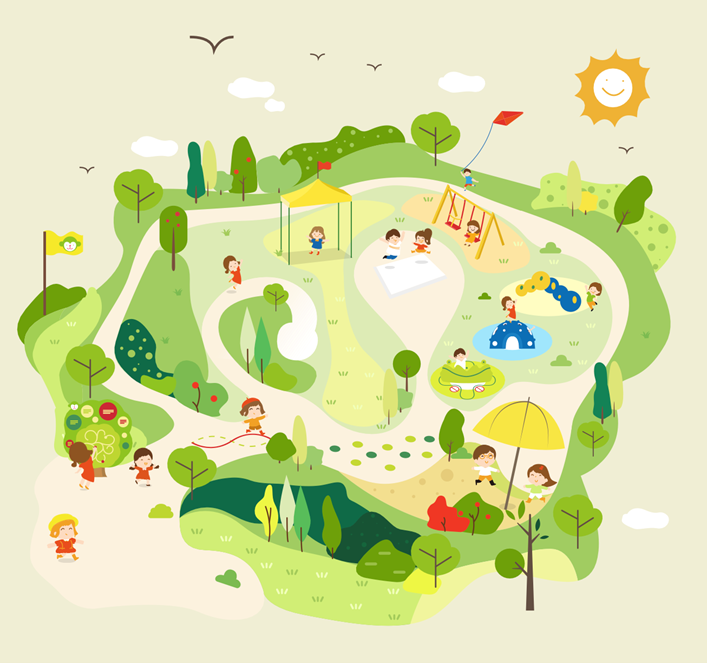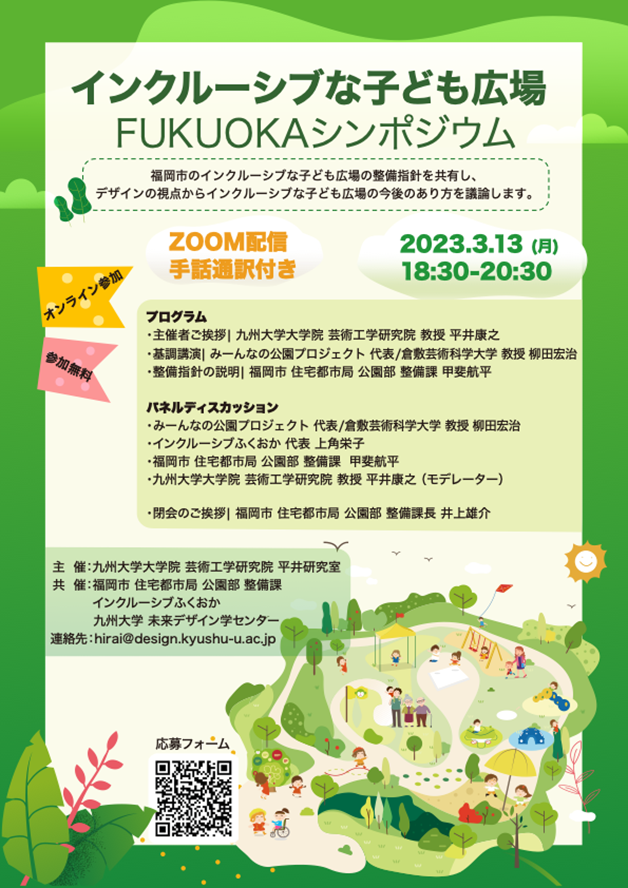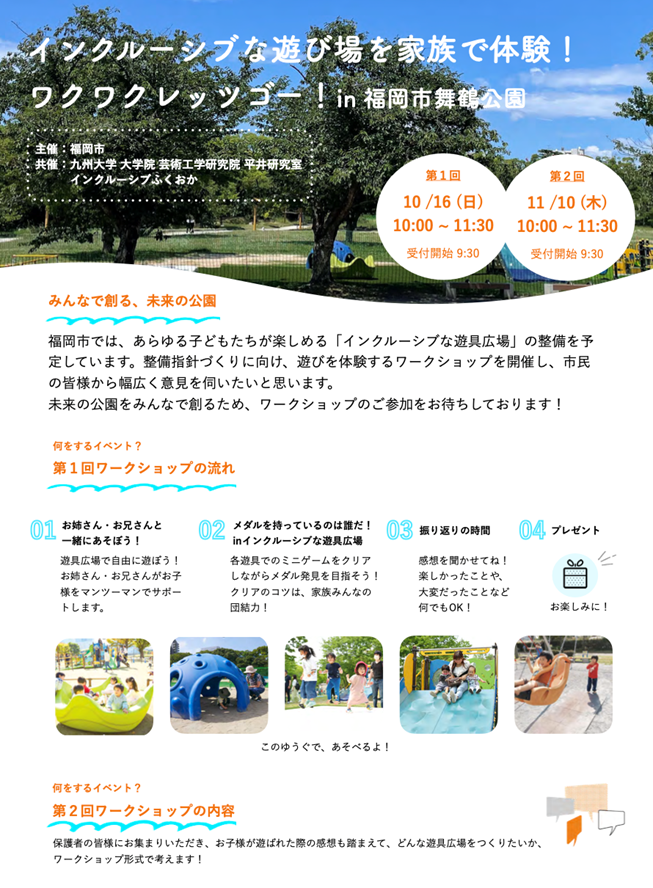ActivityDesign Project for Development Guidelines for an Inclusive Children’s Plaza2023.3.16

Research Director:
Professor Yasuyuki Hirai, Faculty of Design
Keywords:
Inclusive, park, design
An inclusive park is defined as, “An inclusive place where all children can freely play and learn together while expressing themselves irrespective of disability,” by Koji Yanagida, director of the Minna-no-Koen Project (Park for Everyone Project).
The inclusive park movement in Japan began in 2020 with the Kinuta Park in Tokyo. Meanwhile, in March 2022, the Inclusive Playground Development Policy Planning Committee was launched in Fukuoka (later changed to Inclusive Children’s Plaza, referred to as Planning Committee below), and I was involved in development policy planning as the committee chairman.
Normally, members of government running planning committees are limited to the role of advising the administration, and their job is complete once they have given their opinions. However, this time, with the approval of Fukuoka City, we were able to carry out a survey of user needs as a research activity at Kyushu University, in parallel with the committee, and prepare and propose the solutions needed for the development plan. This was a testament to the flexibility of the staff members of the construction section, Park Department, Housing & Urban Planning Bureau, Fukuoka City who led the planning committee and the ability of the committee participants to share a vision to achieve.
Specifically, workshops were held together with Inclusive Fukuoka, a stakeholder organization, on two occasions, at a test park installed at Maizuru Park on October 16 and November 10, 2022. The first workshop involved interviews and observations to identify issues for each type of child’s disability, after which mapping was carried out. The second workshop involved interviews carried out using a journey map covering the ideal play styles and criteria for the plaza. These workshops enabled us to share the various needs with parental guardians of children with disabilities, identifying which issues needed solutions.
We then revisited the development plan based on those issues, ultimately releasing the plan in January 2023. Park development policy typically focuses on the playground equipment. However, this time we were able to create a development policy that emphasized the user’s perspective divided into six major categories. Of those six, three were play-related categories while the remaining categories involved accessibility, safety and security, and the information environment. This was due to our understanding of the importance of eliminating parental worries and ensuring accessibility, even before considering children’s playtime. The composition of the policy transforms the planning into an ongoing activity, rather than concluding with a design policy for only the physical plaza itself.
This development plan is now being used for the first inclusive children’s plaza being developed in 2024 at Momochi Central Park. It is also being referred to by other municipalities.
Furthermore, after the release of the development plan, an online symposium was held on March 13, 2023, entitled, “Inclusive Children’s Plaza FUKUOKA.” A total of 110 participants from throughout Japan, including experts and citizens, joined the session, showing the strong interest in the topic.
We look forward to seeing inclusive designs such as this one gain wider adoption in the future.
https://project.nikkeibp.co.jp/atclppp/PPP/434148/021400107/
https://www.city.fukuoka.lg.jp/jutaku-toshi/koenkensetsu/midori/inclusive/inclusive_park_in_FukuokaCity.html


This research received a small grant in FY2022 from the Center for Designed Futures of Kyushu University.
